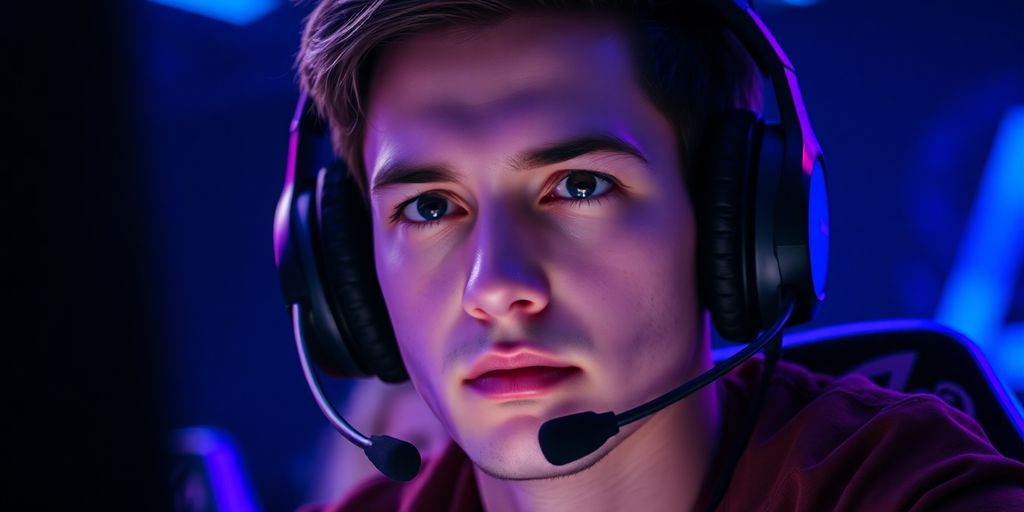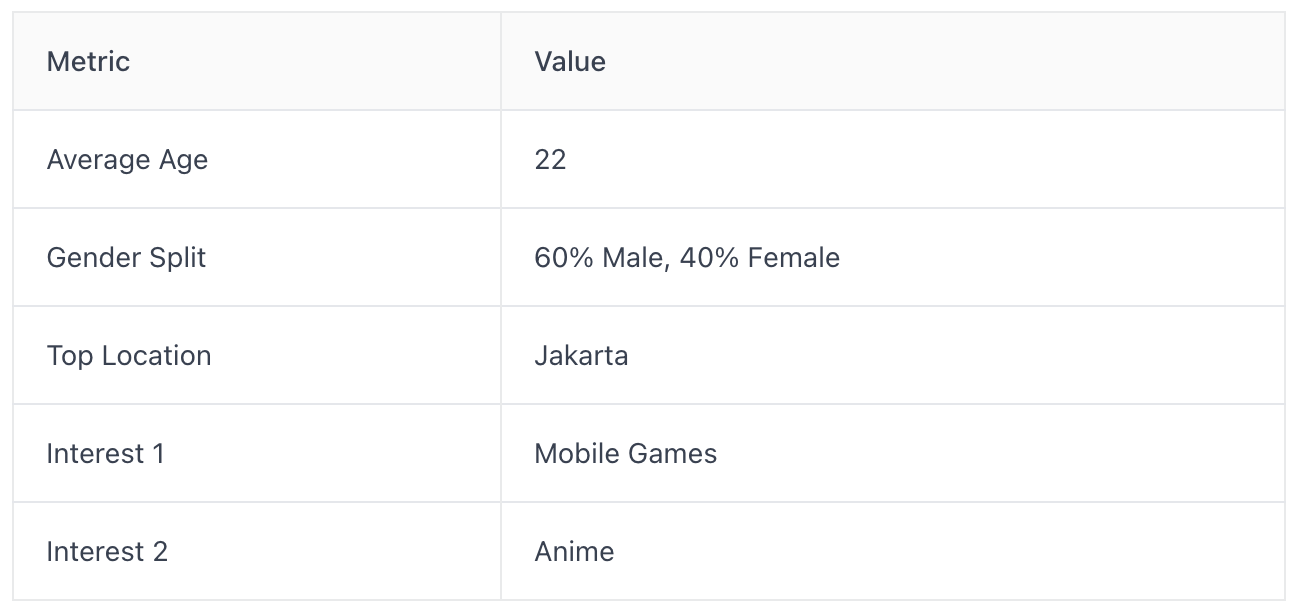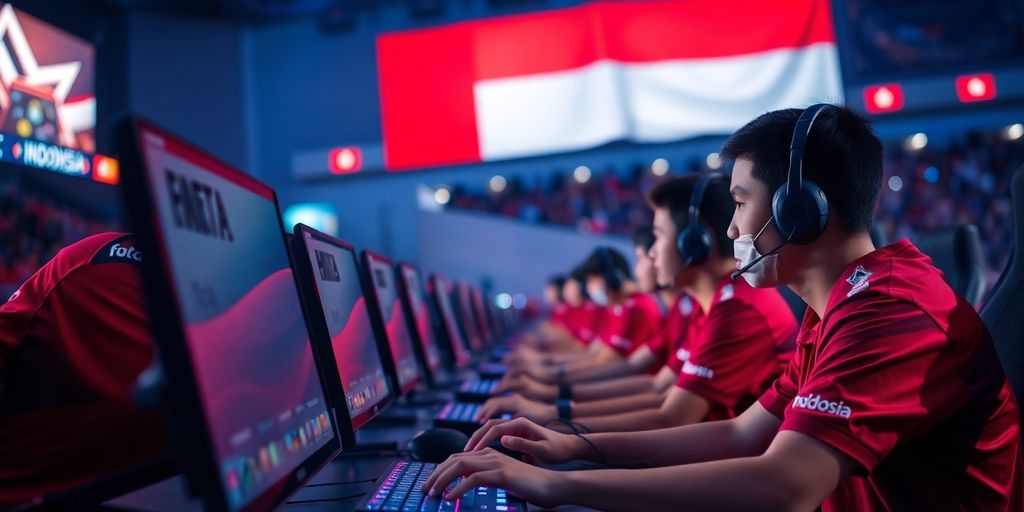Register as an organizer
Click the button below and finish your organizer registration, or fill out the form and we will be in touch to assist you.
.jpeg)
Getting a sponsorship for your esports team or event in Indonesia can feel like a big challenge. But it doesn't have to be. This article will show you how to put together a sponsorship proposal esports that really gets noticed. We'll cover everything from understanding the local scene to showing sponsors exactly what they get for their money. By the end, you'll have a good idea of how to make your proposal stand out and get the support you need.
Indonesia's esports scene is booming, and it's important to understand the key elements before crafting a sponsorship proposal. It's not just about slapping a logo on a jersey; it's about connecting with a passionate audience in a meaningful way. Let's break down some of the critical aspects.
Mobile Legends: Bang Bang (MLBB) isn't just popular in Indonesia; it's a cultural phenomenon. It's the undisputed king of mobile esports in the country, with millions of active players and viewers. This makes it a prime target for sponsors looking to reach a massive audience. The game's accessibility and engaging gameplay have fueled its rapid growth, especially among younger demographics. Tournaments regularly draw huge crowds, both online and offline. A recent tournament sponsorship proposal even focused on MLBB.
Understanding who you're trying to reach is just as important as where they are. Indonesian esports fans are a diverse group, but some key characteristics stand out:
These fans are highly engaged and influential within their social circles, making them valuable brand ambassadors. They're active on social media, follow their favorite teams and players closely, and are always on the lookout for the latest trends.
While MLBB dominates, other esports titles are also gaining traction in Indonesia. Knowing which games are popular and which tournaments draw the biggest crowds is crucial for targeting your sponsorship efforts. Here's a quick rundown:
Major tournaments like the Mobile Legends Professional League (MPL) Indonesia and various PUBG Mobile Pro League (PMPL) events attract significant viewership and offer excellent brand exposure opportunities.

It's time to talk about making your sponsorship proposal shine. You've got to grab attention and show potential sponsors why your esports opportunity is the one they can't miss. It's not just about asking for money; it's about presenting a partnership that benefits everyone involved.
Don't send out the same generic proposal to every company. Do your homework! Understand each sponsor's goals, target audience, and marketing strategies. A well-crafted sponsorship proposal speaks directly to their needs. Show them you get what they're about, and how your esports event can help them achieve their objectives. For example, if you're approaching a tech company, highlight the innovative aspects of your event and the tech-savvy audience you attract. If it's a food brand, focus on the potential for product placement and sampling opportunities.
What makes your esports event different? What can you offer that others can't? This is your unique selling proposition (USP). Maybe it's the specific game you're focusing on, the community you've built, or the innovative ways you're engaging with fans. Whatever it is, make it clear and compelling. Don't be afraid to brag a little (but back it up with data!).
Presentation matters. A well-structured proposal is easy to read and understand. Start with a strong introduction that grabs the sponsor's attention. Clearly outline the benefits of sponsoring your event, the different sponsorship tiers available, and how you'll measure the return on investment. Include visuals, such as photos and videos, to bring your event to life. Make sure your contact information is easy to find, and always include a call to action. Here's a basic structure to follow:
Executive Summary: A brief overview of your event and the sponsorship opportunity. About Us: Introduce your organization and your experience in esports. Event Details: Provide information about the event, including the date, location, and target audience. Sponsorship Packages: Outline the different sponsorship tiers and the benefits associated with each. Investment: Clearly state the cost of each sponsorship package. Contact Information: Make it easy for sponsors to get in touch with you.
It's not enough to just promise results; you need to prove you can deliver. Sponsors want to see the numbers, and in today's world, data is king. This section is all about backing up your claims with hard evidence.
Knowing your audience is key, and being able to show sponsors exactly who they'll be reaching is even better. Don't just say you have a large following; break it down. What's their age range? Where are they located? What are their interests? The more specific you can be, the better. This level of detail helps sponsors determine if your audience aligns with their target market.
Here's an example of how you could present this data:

How will sponsoring your team or event translate into actual brand exposure? This is what sponsors really care about. Think beyond just logo placement. Consider things like social media mentions, website traffic, and media coverage. Quantify everything you can. For example, estimate the number of impressions their logo will receive during a broadcast or the number of social media shares a sponsored post will generate. Make sure to highlight the potential for Indonesia's esports market growth.
Ultimately, sponsors want to know if their investment will pay off. This is where you need to get creative and think about how you can measure the ROI. Can you track website visits from viewers who saw their ad during a stream? Can you offer unique promo codes that allow you to track sales generated through the sponsorship? The more concrete you can be, the more appealing your proposal will be.
It's important to be realistic with your projections. Overpromising and underdelivering is a surefire way to damage your relationship with a sponsor. Be transparent about your methodology and acknowledge any potential limitations. Honesty builds trust, and trust is essential for long-term partnerships.
It's a good idea to have different levels of sponsorship. Think of it like buying a car – some people want all the bells and whistles, while others just need something to get them from A to B. Sponsorships are the same. You want to have something for everyone, from the small local business to the big national brands.
Okay, so you need levels. Most people go with three: Bronze, Silver, and Gold. But you can get creative! Maybe you call them "Beginner," "Intermediate," and "Godlike" if it fits the esports theme. The important thing is to make it super clear what each level gets. Don't make sponsors guess what they're paying for.

Getting sponsors noticed before the main event is key to a successful partnership. It's about building anticipation and making sure everyone knows who's supporting the esports scene. Here's how:
Pre-event promotion is not just about slapping a logo on a poster; it's about weaving sponsors into the narrative of the event itself, creating a sense of shared excitement and anticipation.
During the event, visibility is paramount. It's about integrating sponsors into the viewing experience without being intrusive. Think subtle but effective.
Emotional engagement sets sponsorships in sports apart from other forms of advertising. MOONTON Games leveraged data-driven insights to boost brand visibility.
Don't let the momentum die after the event ends. Post-event recognition and reporting are crucial for demonstrating value and securing future partnerships.

It's not just about getting the money; it's about keeping the sponsors happy and coming back for more. Think of it as a partnership, not just a transaction. A good relationship means they're more likely to stick with you, even when things get tough. It's about building trust and mutual benefit.
Generic emails? Forget about it. Sponsors want to feel like they're more than just a logo on a banner. Personalize your communication. Know their goals, understand their brand, and tailor your interactions accordingly. After an event, don't just send a thank you note; provide a detailed report on how their sponsorship performed. Did they get the brand exposure they were hoping for? What was the audience engagement like? Show them you care about their ROI.
Don't just tell sponsors what you need; ask them what they want. What are their marketing goals? What kind of audience are they trying to reach? Work with them to create a sponsorship package that meets their specific needs. This might mean brainstorming new activation ideas or customizing existing ones. The goal is to make them feel like they're an integral part of your team. Think about offering custom sponsorship opportunities.
Sponsorship isn't a one-time thing. It's an ongoing relationship that needs to be nurtured. Here are some ideas:
Building strong relationships with sponsors takes time and effort, but it's worth it in the long run. By focusing on personalized communication, collaborative partnership development, and long-term engagement strategies, you can create lasting relationships that benefit both you and your sponsors.
So, there you have it. Getting an esports sponsorship in Indonesia isn't just about sending out a bunch of emails and hoping for the best. It's more like putting together a really good puzzle. You need to know who you are, what you bring to the table, and what the sponsor actually wants. It takes some work, sure, but when you get it right, it can really open up some cool doors. Just keep at it, be clear, and show them why working with you is a smart move. Good luck out there!
Indonesia's esports scene is booming, especially with games like Mobile Legends: Bang Bang. Millions of fans, mostly young people, follow these games closely. This means a huge audience for sponsors to reach.
A strong proposal shows sponsors how your event or team will help them. It should highlight what makes you special, how many people you can reach, and how their brand will be seen.
It's super important to make your proposal fit each sponsor. Think about what they sell and what their goals are. For example, a snack company might want to reach many young fans, while a gaming gear company might want to show off their products with top players.
Use numbers! Show how many people watch your streams, follow your social media, or attend your events. Explain how many times their logo will be seen and how this can lead to more sales for them.
Tiered packages mean you offer different levels of sponsorship, like bronze, silver, and gold. Each level comes with different benefits and prices. This gives sponsors choices based on their budget and what they want to get out of the partnership.
Keep talking to them! Share updates, ask for their ideas, and show them the good results of their sponsorship. A good relationship means they'll likely want to work with you again in the future.
More blogs
Click the button below and finish your organizer registration, or fill out the form and we will be in touch to assist you.